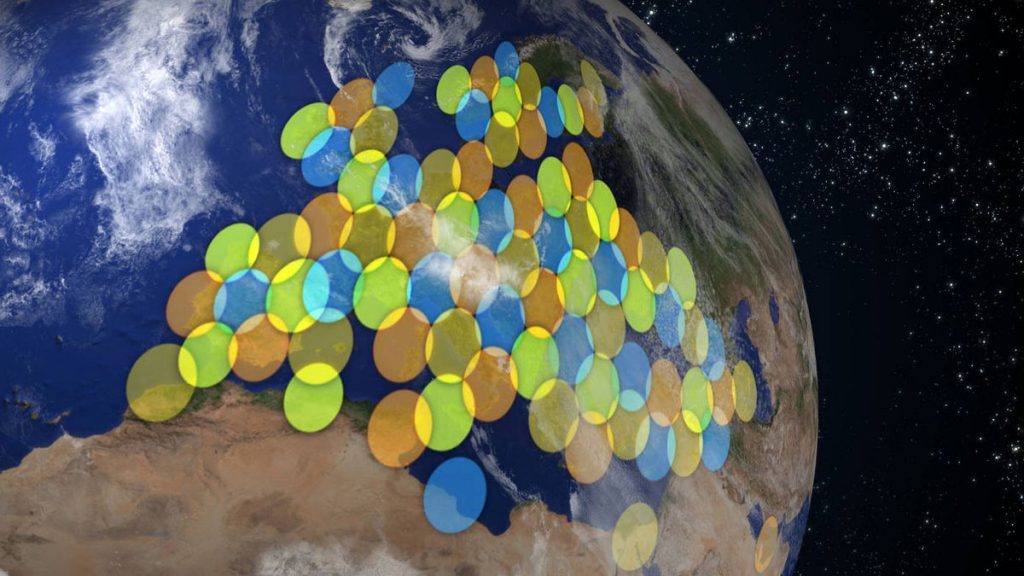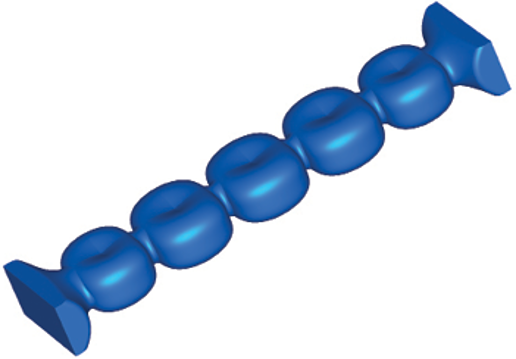The latest development from a collaboration between 3D Systems and Airbus proves that space is the place for 3D printing.
In the redesign of a radio frequency (RF) filter engineers have managed to bypass surface topology concerns and cut the weight of a part by 50%.
The metal component is now the first tested and validated part of its kind for commercial use in telecommunications satellites, used to feed television, phone and internet signals around the world.

The price of space
RF filters are responsible for the transmission and reception of wave frequencies. They have been an integral part of every in-space communication system since invention.
To meet a global demand for internet connectivity, broadband providing satellites now include around 500 RF filters, designed to last from 10 to 15 years.

The tax for sending objects into space is determined by weight. A geo-stationary telecoms satellite, like the KA-SAT manufactured by Airbus Defence and Space, costs around $20,000 per kilogram to launch.
Consequently, reducing the amount of material used to make the equipment has become an primary concern for aerospace engineers.
A case of form follows function
With direct metal printing there is very little material waste. Designs that would typically appear as a block of metal can be topologically optimized to make more geometrically complex shapes.
“This project is a classic example of ‘form follows function,” says Koen Huybrechts, project engineer at 3D Systems, “The disruptive innovation lies in the fact that pure functionality, not manufacturability, now determines how the hardware will be designed.”
Though the exterior of Airbus’ 3D printed RF is still a block, its interior and fit with the existing framework has been fine tuned.
Inside lies a channel with undulating, ovoid shapes chambers that would be impossible to make with traditional manufacturing.

Topology concerns
The surface structure of metal 3D printed parts is critical to qualification.
Paul Booth, project engineer for Airbus Defence and Space, explains, “Machined surfaces have sharp peaks and troughs, while the 3D printed surface is spheroids melted together so there is less sharpness.”
In this case, optimizing the part for more effective signal filtering outweighs any issues with surface topology.

Silver linings
Three sample RF filters, 3D printed by 3D Systems in aluminium, all met or exceeded flight-ready requirements, with a silver plated component coming out on top.
Booth continues “We were very pleased with the work that 3D Systems did for us and many inside Airbus have commented on how good the surface finish is.”
“We did some x-ray CT scans and have been impressed with the density of the part and the general surface quality.”
Back down to Earth
Within the Earth’s atmosphere, Airbus has previously achieved qualification of metal 3D printed parts for use in its commercial airplanes. Industrial and mechanical engineering company Liebherr is responsible for making the 3D printed spoiler actuator valve block inside the wings of an A380.
Stratasys has also invested over $15 million dollars in the company, and standardized the use of ULTEM plastic for the interior of the A350 XWB aircraft.
Sign up to the 3D Printing Industry newsletter for the latest stories delivered to your inbox. We’re also on Facebook and Twitter.
Check our events page for 3D printing conferences and seminars near you.
Featured image: The commercial Eutelstat KA-SAT broadband satellite manufactured by Airbus Defence and Space. Photo via EADS Astrium



